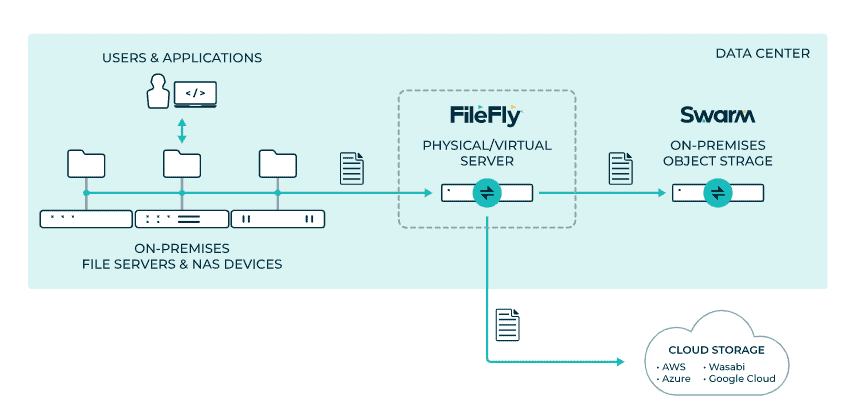Datacore is launching version 4.0 of its FileFly solution. It allows companies to make their data centers more efficient by automatically migrating historical data and infrequently used files to lower-cost object storage or cloud storage in hybrid and public cloud environments.
Maintaining historical data and infrequently used files in a primary storage tier is a concern for many companies. This data can occupy large amounts of file servers and NAS resources. This prevents the resources from being used for other more frequently used data. Moreover, constant backup of these files and data takes a lot of processing power.
A common alternative — purchasing more file and NAS servers and distributing the files across more machines — is far from convenient. This adds to the cost, and the distribution of files and data causes performance to lag. Not to mention all the downtime required to perform these operations.
Introducing FireFly 4.0
DataCore developed a new option: FileFly version 4.0. With this solution, companies can ‘clean up’ their primary storage layer based on preset policies to create more space for frequently used and important data while reducing the number of backup windows and increasing capacity.
The software automatically migrates historical data and infrequently used files to object storage, which is cheaper to manage. Customers who want to keep their data on-premises can use DataCore’s Swarm Object Storage as an offload layer. Swarm Object Storage is an on-premises object storage solution that simplifies data management, storage and protection. At the same time, it preserves S3/HTTP access to any application, device or end user.
Migration to cloud storage
If a customer prefers to deploy their workloads to the hybrid or public cloud(s), the software is able to move the files to S3 compatible cloud storage for AWS, Azure, Google Cloud and Wasabi object storage.
DataCore FileFly 4.0 is available through partners. Pricing is based on the terabytes (TBs) migrated from source file servers and NAS devices to object or cloud storage.

